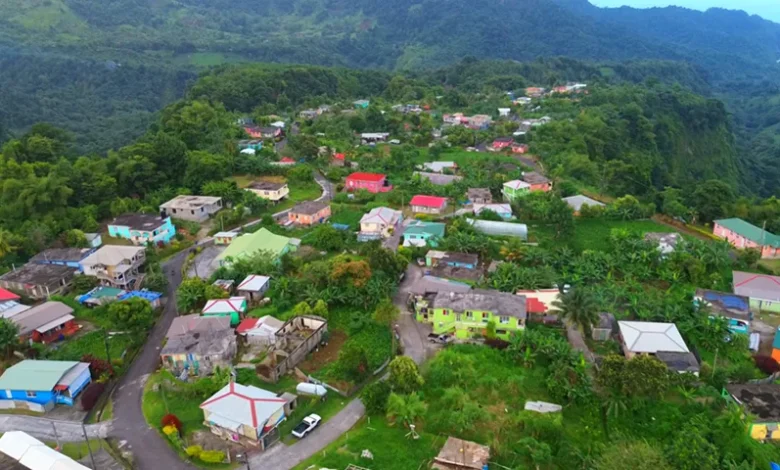Mountain Villages in Dominica

Mountain villages in Dominica are not just places of residence—they are a cultural landscape shaped by volcanic peaks, fertile valleys, and generations of resilient communities. The interior of Dominica, known for its towering rainforests and mist-covered ridges, is home to dozens of small mountain settlements that preserve traditional lifestyles, foster community strength, and serve as vital stewards of the Nature Isle’s ecological and cultural heritage.
Life in Dominica’s Mountain Villages
Dominica is renowned for its steep, volcanic terrain, and many communities are nestled deep in its interior. Villages are often perched on slopes, ridgelines, or within valleys carved by ancient lava flows and mountain rivers. These communities benefit from cooler temperatures, fertile volcanic soil, and access to rich natural resources like hot springs, waterfalls, and herbal plants.
Homes are typically surrounded by kitchen gardens and small farms growing Dasheen, Tannia, Sweet Potatoes, Ginger, Bananas, Plantains, and herbs used in traditional medicine. These villages are known for self-sufficiency, communal labor, and strong family ties, with livelihoods traditionally rooted in agriculture, crafts, and herbal knowledge passed down through generations.
Notable Mountain Villages and Communities
Scattered across Dominica’s misty interior, these fascinating mountain villages feel like time capsules—steeped in tradition, ancestral knowledge, and resilient community life shaped by nature.
Many of these villages are connected by the Waitukubuli National Trail (WNT), the Caribbean’s longest hiking trail, which stretches across Dominica from south to north. The trail’s fourteen segments (#1, #2, #3, #4, #5, #6, #7, #8, #9, #10, #11, #12, #13 and #14), passes through remote highlands, farmsteads, and cultural hubs—offering hikers immersive access to the heart of mountain life. From Wotten Waven’s hot springs to the cool ridges above Cochrane or the floral pathways in Giraudel, the WNT helps transform these villages into vibrant eco-tourism destinations.
Laudat
Perched over 2,000 feet above sea level, Laudat is the gateway to Dominica’s Morne Trois Pitons National Park. It leads to iconic sites such as Middleham Falls, Boiling Lake, Titou Gorge, and Freshwater Lake. Once isolated, the village has grown into an eco-tourism hub, with guesthouses, spas, and guides catering to hikers and nature enthusiasts.
Wotten Waven
Just south of Laudat, Wotten Waven is famed for its natural sulfur springs, therapeutic mud baths, and small wellness spas. Local families have transformed their village into a health retreat while preserving its rustic charm. The village also hosts herbal tours and cultural demonstrations.
Morne Prosper
This quiet, elevated village sits near the eastern boundary of the Morne Trois Pitons forest reserve. It is known for its lush agricultural plots and is a haven for birdwatching, especially the rare endemic birds, the Jaco Parrot and Sisserou Parrot. Morne Prosper offers stunning mountain views and remains deeply rooted in farming traditions.
Giraudel and Eggleston
These twin mountain communities near Roseau are celebrated for their floral heritage. Giraudel hosts Dominica’s annual flower show, showcasing botanical gardens, tropical blooms, and landscaping innovations. Both villages are also known for artisanal skills, agriculture, and their scenic, winding mountain roads.
Bellevue Chopin
Located on the slopes of Morne Canotte, Bellevue Chopin is one of Dominica’s best-organized rural communities. It plays a leading role in organic farming and agro-tourism. The Dominica Organic Agriculture Movement (DOAM) has strong roots here, and many farmers participate in cooperatives that supply local and export markets.
Cochrane
A peaceful village located above Canefield, Cochrane offers hiking access to Sylvania, Bwa Nef Falls, and connections to the Waitukubuli National Trail. It is known for its cool climate, small-scale farming, and growing appeal as a retreat for nature lovers.
Penrice and Belles
Nestled in the mountainous rainforests in Dominica’s interior, Penrice and Belles maintain strong farming traditions. They are important sources of root crops and seasonal vegetables for urban markets and host several community-based initiatives in sustainable agriculture and youth engagement.
Grand Fond
While closer to the coast than most, Grand Fond is surrounded by steep hills and functions much like a mountain village. It’s a vibrant agricultural settlement with close cultural ties to both the mountains and the Atlantic Ocean.
Community Strength and Cultural Identity
Mountain villages in Dominica preserve traditional knowledge, local dialects, herbal medicine, and a strong sense of community cooperation. Festivals, church gatherings, and communal farming still shape daily life. Many villages have active village councils, youth groups, and women’s associations working to improve livelihoods while retaining cultural values.
These communities also play vital roles in conservation. Their proximity to forest reserves and national parks makes them key partners in eco-tourism, trail maintenance, and wildlife protection, especially for endemic species like the Imperial Amazon and Dominican Coqui Frog.
Guardians of the Interior
Dominica’s mountain villages are more than elevated settlements—they are cultural and environmental custodians, living in harmony with nature and preserving heritage amidst modern change. As eco-tourism and sustainable development expand across the island, these villages continue to serve as gateways to Dominica’s soul: untouched, vibrant, and deeply rooted in the land.




